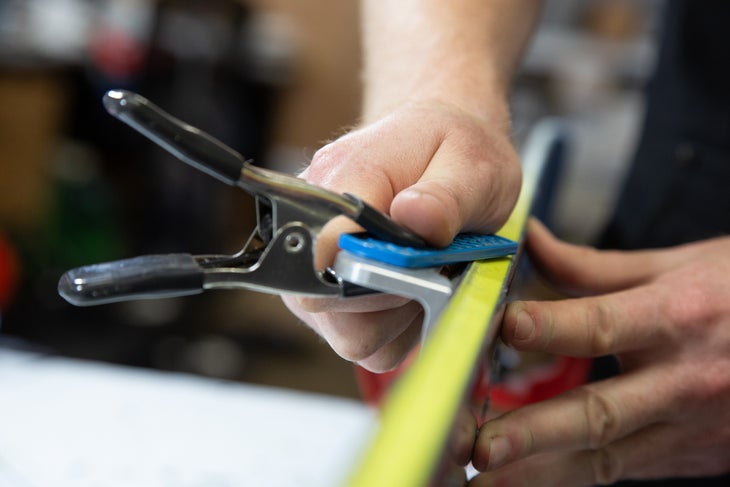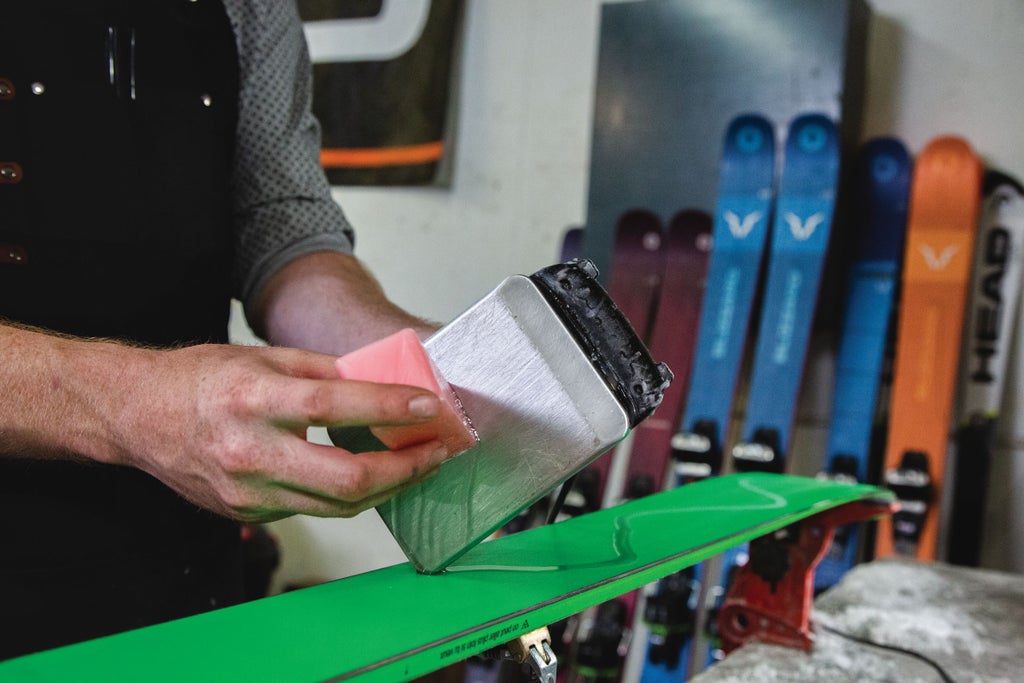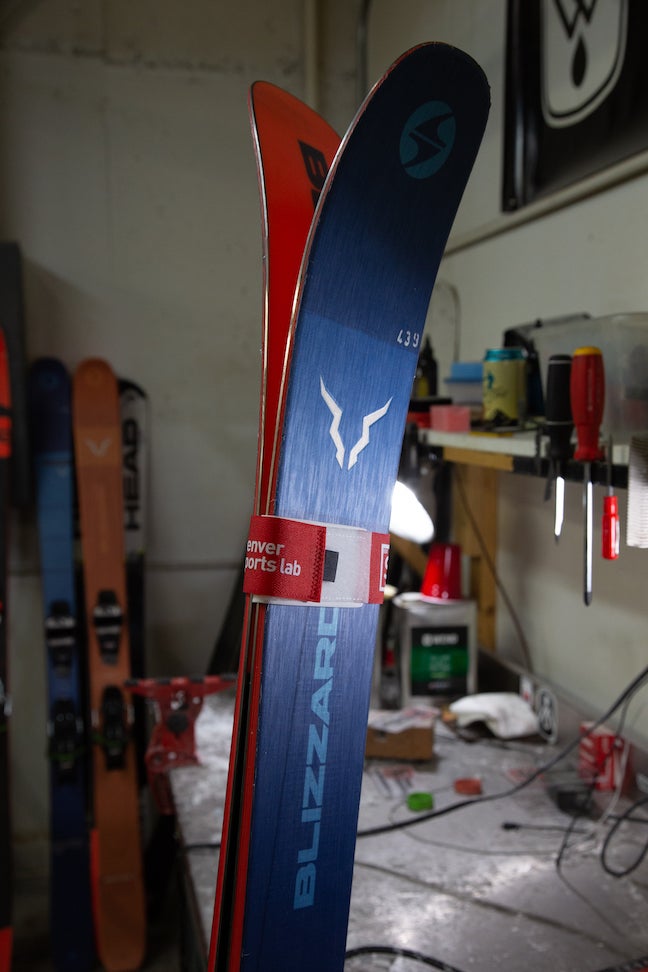Products You May Like
Get full access to Outside Learn, our online education hub featuring in-depth fitness, nutrition, and adventure courses and more than 2,000 instructional videos when you sign up for Outside+
Sign up for Outside+ today.
Unless you’re still earning your turns in the high alpine, you’ve probably already put your skis to bed for the summer and dusted off the bike, paddle board, or maybe even golf clubs (hey, you do you—no judgment). Quick question before you move on to your summer endeavors: Did you store your ski gear properly?
Not to sound like your dad, but you really are doing yourself a favor by taking the time and going through a few extra steps before stashing your skis and boots for the off-season. Not only will proper storage save you time when the snow starts flying again and it’s time to gear up, but it will also help protect and extend the functional life of your expensive equipment.
Related: When it’s safe to reuse or repair your gear, and when you really should replace it
These seven steps for proper ski gear storage take one hour, max, and can save you time, money, and frustration come fall.
1. Polish ski edges
Before storing your skis for the summer, inspect your ski edges. If you left your skis in the roof box or back of the car for a day or two after your last ski day, you might find some rust patches on your edges. Or you might have accumulated some nasty edge burrs after hitting newly exposed rocks during the last laps of spring.

Gently run a gummy stone over all four ski edges to remove both rust and burrs. If the gummy stone doesn’t do the job on the burrs, try a fine diamond file. Be sure to use a file guide that matches your ski’s side edge bevel when using a diamond file to ensure you don’t mess up your side edge bevel. Learn more about ski edge maintenance in this handy tutorial.
2. Clean ski bases
There’s a lot of grime in snow, especially in the springtime, not to mention in the road gunk your skis may be exposed to if you transport your skis in a car rack. All this sticks to your skis’ bases and can compromise their integrity over time, so make sure you give your ski bases a good wipe with a clean cloth or rag after every ski day, but especially before storing skis for the off-season.
Go one step further and apply a ski base conditioner before putting skis to bed for the summer. A base conditioner like Wend Waxworks’ MF Natural Cleaner/Conditioner will help draw out contaminates from the pores in ski bases and hydrate bases at the same time. Plus, this conditioner smells heavenly.
3. Apply a thick layer of wax
Wax helps keep ski bases hydrated and protected over a long summer’s nap, so take the time to slap on a generous layer of wax before storing skis for the off-season. It doesn’t really matter what type of wax you use (just make sure you don’t use a fluorocarbon wax, since those waxes are bad for the environment). No need to scrape off any wax after application—the thicker the layer of wax, the better hydrated and protected your skis will be over the summer. New to waxing skis yourself? Learn how in this step-by-step video tutorial.

4. Turn down binding DIN
We’re always cautious when recommending skiers mess with their binding DIN settings, because not doing it correctly can lead to binding malfunctions and serious injuries. That said, turning down your DIN setting for the summer helps preserve the integrity of the binding springs over time.
So this message is for those who know what a DIN setting is, and how to adjust it: Crank those babies down as low as they’ll go on both the toe and heel piece for summer storage. Just don’t forget to adjust the DIN settings again before your first ski day next season.
If you don’t know how to adjust your DIN but would like to learn, visit your local ski shop and talk to a certified ski technician.
5. Properly store skis
Once you’ve polished your skis’ edges, cleaned up the bases, applied wax, and backed off the DIN, your skis are ready to be put to bed. Use a padded ski strap (or ideally, two) to bind your skis together near the tip and tail, where your edges last make contact with each other. These padded straps will help keep just the slightest space between your skis’ edges and thereby protect them.

Most of us store our skis in the garage over the summer, but ideally, you’d store them somewhere that has better temperature regulation (not too hot or cold, not too dry or wet) and doesn’t see huge temperature swings like garages typically do. Drastic temperature changes can negatively affect the metal of your skis’ edges and potentially even warp ski bases.
Best-case scenario: Store your skis in a ski rack somewhere in your house.
6. Properly store ski boots
Compared to skis, ski boots are easy. Just make sure your footbeds and liners are dry before summer storage. Then, make sure the shell is buckled snugly but not too tightly to keep the structural integrity of the plastic intact over the summer. Ideally, store ski boots in a boot bag that can be zippered closed to prevent critters from making a home in your cozy boot liners. Lastly, store the boot bag in a cool, dry place.
7. Remove batteries from avalanche beacon
If you’re a backcountry skier, your avalanche transceiver is one of your most important pieces of equipment, so take care of it by removing batteries at the end of the season. If left in, battery acid can corrode the metal terminals over time and damage the transceiver.
That’s it. Now your most important (and expensive) pieces of gear will be protected during the off-season, and when it’s finally time to get back on snow, you’ll be ready to go.
